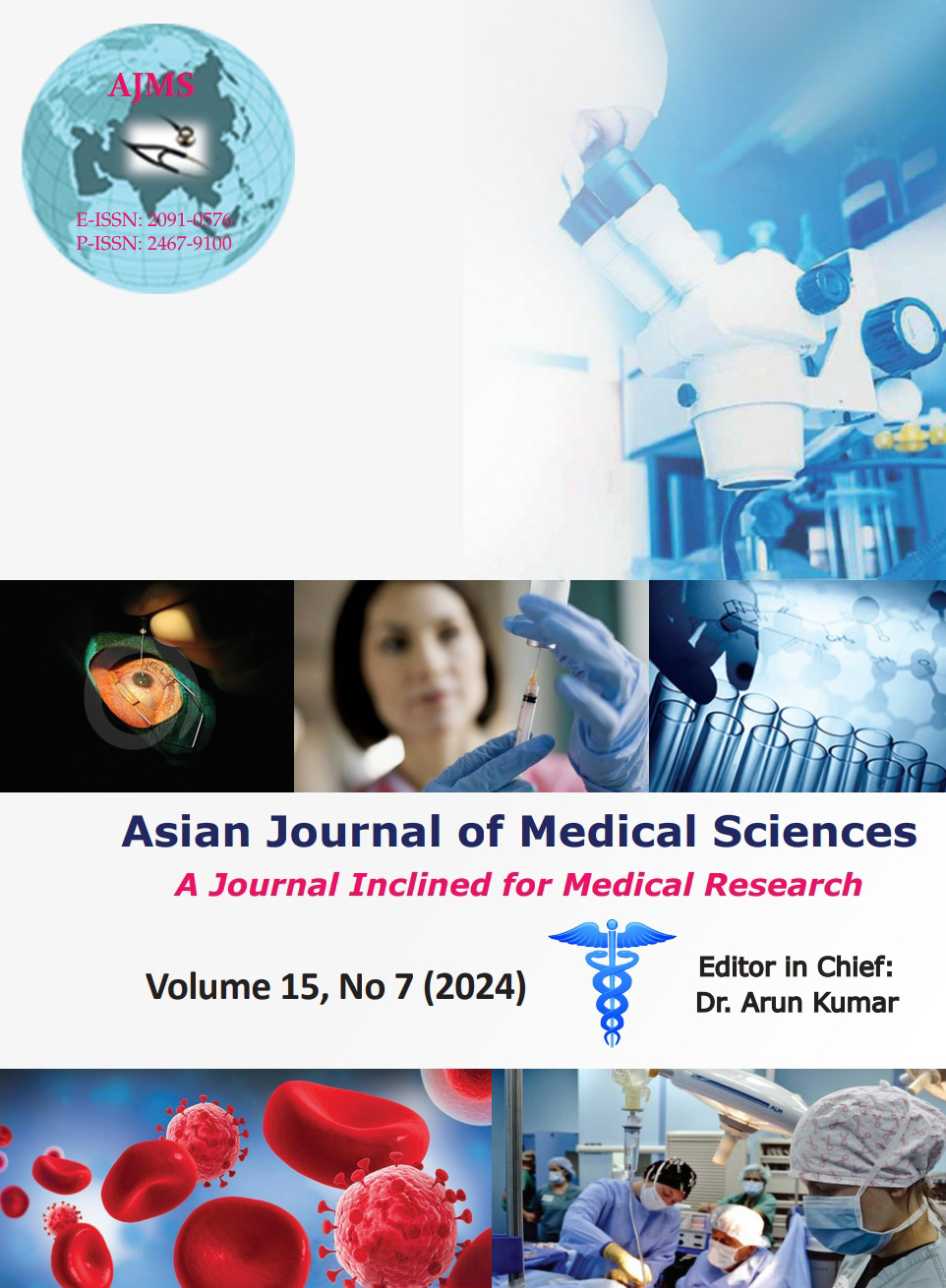Evaluation of varying doses of magnesium as an adjuvant to ropivacaine in supraclavicular brachial plexus block
Keywords:
Magnesium adjuvant; Ultrasound-guided; Supraclavicular brachial plexus block; Peripheral nerve blockade; Ropivacaine; Rescue analgesicAbstract
Background: Peripheral nerve blockade is a crucial component of comprehensive anesthetic care, providing effective analgesia with fewer side effects than opioids and other oral analgesics.
Aims and Objectives: This study investigated the effectiveness of a magnesium adjuvant in an ultrasound-guided supraclavicular brachial plexus block to determine the minimum dose required for the desired effects.
Materials and Methods: This prospective, double-blind, and randomized controlled study included 90 patients scheduled for elective upper limb orthosurgery at GTMCH. The 90 patients were divided into three groups: A, B, and C. Each group received 21.5 mL of the test drug, with A receiving ropivacaine and normal saline, B receiving ropivacaine and magnesium, and C receiving ropivacaine and magnesium.
Results: There was a significant difference in Group A between the onset of sensory and motor blockade in Groups B and C. There was a significant difference in Group A between the duration of sensory and motor blockade in Groups B and C, but no significant difference was observed between Groups B and C. The visual analog scale score varied from 0 to 6 in Group A and from 0 to 5 in Groups B and C. It was found to be significant only from the 7th to 10th h. There was a significant difference in Group A between Groups B and C in 1st rescue analgesia post-operatively and the number of rescue injections in the first 24 h, but no significant differences was observed between Groups B and C.
Conclusion: Both 100 and 150 mg magnesium sulfate with 0.5% ropivacaine in supraclavicular blocks prolonged the blockade duration and reduced analgesic needs.
Downloads
Downloads
Published
How to Cite
Issue
Section
License
Copyright (c) 2024 Asian Journal of Medical Sciences

This work is licensed under a Creative Commons Attribution-NonCommercial 4.0 International License.
Authors who publish with this journal agree to the following terms:
- The journal holds copyright and publishes the work under a Creative Commons CC-BY-NC license that permits use, distribution and reprduction in any medium, provided the original work is properly cited and is not used for commercial purposes. The journal should be recognised as the original publisher of this work.
- Authors are able to enter into separate, additional contractual arrangements for the non-exclusive distribution of the journal's published version of the work (e.g., post it to an institutional repository or publish it in a book), with an acknowledgement of its initial publication in this journal.
- Authors are permitted and encouraged to post their work online (e.g., in institutional repositories or on their website) prior to and during the submission process, as it can lead to productive exchanges, as well as earlier and greater citation of published work (See The Effect of Open Access).




